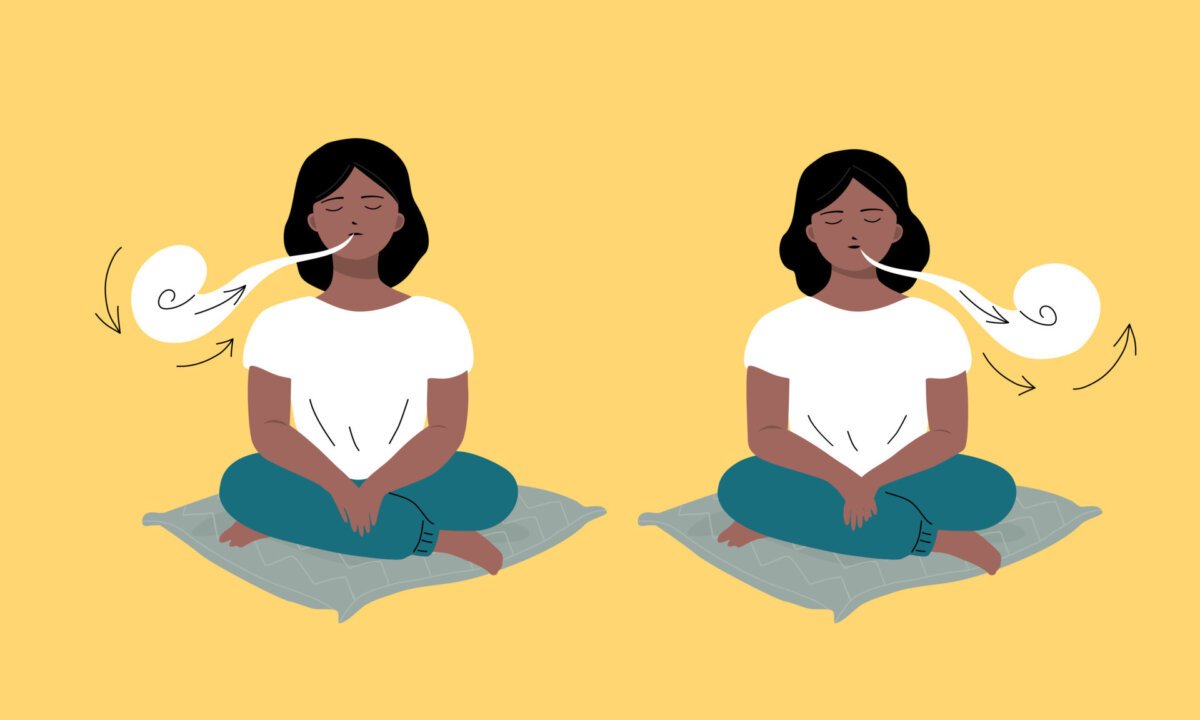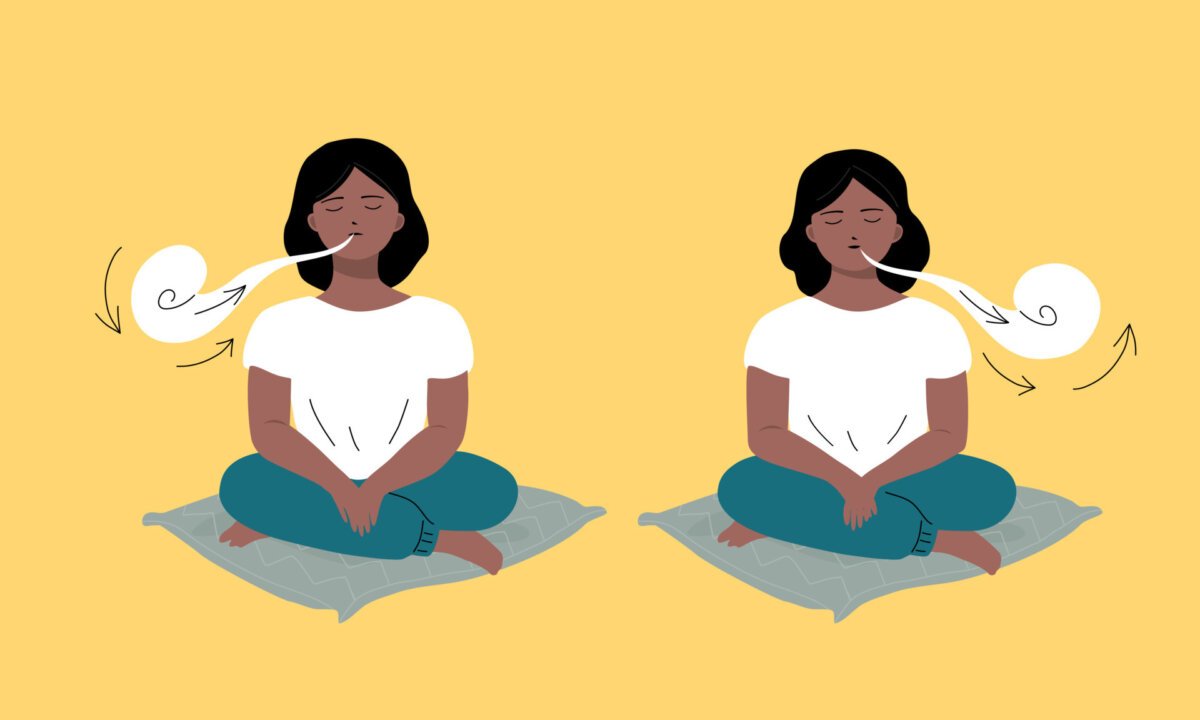The Power of Breath in Meditation: Techniques You Need to Try delves into the profound connection between our breath and our mental state. Breathwork, the conscious manipulation of breathing patterns, and meditation, the practice of training your mind, are intricately linked. This exploration will unveil how these practices work synergistically, offering a pathway to inner peace and improved well-being. We’ll explore the science behind this powerful combination, uncovering how controlled breathing impacts our physiology and neurological function.
Exploring the power of breath in meditation unlocks a pathway to inner peace and focus. These techniques are also incredibly valuable when considering the dynamics of our relationships. Learning how to be present and mindful through breathwork, as discussed in detail on How to Use Meditation to Improve Your Relationships , can transform communication and understanding. Ultimately, mastering breath control is a cornerstone for a more harmonious and fulfilling life, extending beyond personal well-being.
This guide will provide a comprehensive understanding, from basic techniques like diaphragmatic breathing and box breathing to more advanced practices. We’ll learn how to use our breath as an anchor for meditation, synchronize it with mantras, and even incorporate it into daily activities. Furthermore, we’ll examine the myriad benefits, including reduced stress, increased focus, and enhanced emotional regulation. We’ll also cover practical aspects, such as preparing for a meditation session, overcoming common challenges, and integrating breathwork into everyday life. This information will empower you to harness the transformative potential of breath-focused meditation.
Exploring the power of breath in meditation offers a pathway to profound inner peace. Understanding and implementing breathing techniques can significantly reduce stress and enhance mindfulness. This directly connects to the practice of Meditation for Anxiety: Proven Ways to Calm Your Mind , where focused breathing is a cornerstone. Ultimately, mastering these breath-focused techniques empowers you to navigate life’s challenges with greater calm and clarity, aligning with the core principles of meditation.
The Power of Breath in Meditation: Techniques You Need to Try

Source: vecteezy.com
Breathwork and meditation, though often discussed together, represent distinct yet intertwined practices. Understanding their individual characteristics and synergistic relationship is crucial for harnessing their full potential. This article delves into the mechanics, benefits, and practical application of breath-focused meditation, providing a comprehensive guide for both beginners and experienced practitioners.
Introduction: Defining Breathwork and Meditation
Breathwork, at its core, is the conscious manipulation of breathing patterns to influence the body and mind. It’s a practice that recognizes the profound connection between breath and our physiological and psychological states. The significance lies in its ability to quickly and directly impact the nervous system, altering states of arousal, stress, and emotional regulation.
Meditation, conversely, is a broad term encompassing various techniques designed to train the mind and cultivate awareness. Different forms exist, from mindfulness meditation, which focuses on present-moment awareness, to transcendental meditation, which uses a mantra to quiet the mind.
The connection between breathwork and meditation is profound. Breath serves as a powerful anchor for meditation, providing a tangible point of focus to calm the mind. By controlling the breath, practitioners can deepen their meditation practice, enhance focus, and experience a greater sense of inner peace.
The Science Behind Breath and Meditation
The physiological effects of breath control are far-reaching. Controlled breathing, such as slow, deep breaths, activates the parasympathetic nervous system, often referred to as the “rest and digest” system. This activation leads to a decrease in heart rate, a reduction in blood pressure, and a shift from a state of stress to one of relaxation.
Neurologically, meditation and breathwork have been shown to increase grey matter density in areas of the brain associated with attention, emotional regulation, and self-awareness. Regular practice can also improve the connectivity between different brain regions, leading to enhanced cognitive function and emotional resilience.
Controlled breathing significantly impacts stress reduction. Techniques like diaphragmatic breathing can lower cortisol levels, the primary stress hormone. This, in turn, can alleviate symptoms of anxiety, improve mood, and promote overall well-being.
Techniques for Deep Breathing in Meditation, The Power of Breath in Meditation: Techniques You Need to Try
Several basic techniques form the foundation of breath-focused meditation.
- Diaphragmatic Breathing: Also known as belly breathing, this technique involves using the diaphragm to breathe deeply. Place one hand on your chest and the other on your abdomen. Inhale deeply, allowing your abdomen to rise while keeping your chest relatively still. Exhale slowly, feeling your abdomen fall.
- Box Breathing: This technique involves inhaling for a count of four, holding your breath for a count of four, exhaling for a count of four, and holding your breath again for a count of four. Repeat this cycle, visualizing a box as you move through each phase of the breath.
- Alternate Nostril Breathing (Nadi Shodhana): This practice involves alternating the flow of breath through each nostril. Using your right hand, close your right nostril with your thumb and inhale deeply through your left nostril. Close your left nostril with your ring finger, release your thumb, and exhale through your right nostril. Inhale through your right nostril, close it, and exhale through your left. Continue alternating.
Methods to Enhance Meditation with Breath
Using the breath as an anchor is a fundamental method in meditation. By focusing solely on the sensation of the breath entering and leaving the body, practitioners can gently guide their attention away from distracting thoughts and emotions.
Synchronizing breath with mantra repetition involves coordinating the rhythm of the breath with the recitation of a mantra. For example, you might inhale while silently repeating the mantra “Om” and exhale while repeating it again.
Incorporating breath awareness into walking meditation involves paying attention to the breath while walking. Coordinate your steps with your breath, perhaps inhaling for a few steps and exhaling for a few steps. This practice helps maintain presence and mindfulness throughout the day.
Benefits of Breath-Focused Meditation
The mental benefits of breath-focused meditation are numerous. Regular practice can increase focus and attention span by training the mind to stay present. It also reduces anxiety by calming the nervous system and promoting a sense of inner peace.
Emotionally, breath-focused meditation can improve mood by releasing endorphins and reducing the production of stress hormones. It also fosters self-awareness by creating space to observe thoughts and feelings without judgment.
Physically, breath-focused meditation can improve sleep quality by promoting relaxation and reducing physical tension. It can also reduce pain by modulating the body’s pain response through the nervous system.
Preparing for a Breath-Focused Meditation Session
Proper preparation is essential for a successful meditation session.
- Create a checklist of the necessary preparations:
- Find a quiet and comfortable space.
- Wear loose, comfortable clothing.
- Set a timer for your desired meditation duration.
- Minimize distractions by turning off your phone and other devices.
- Determine the best times and places for meditation:
- Choose a time of day when you are least likely to be interrupted, such as early morning or evening.
- Select a place where you feel safe, calm, and undisturbed, such as a quiet room or a natural setting.
- Design a short routine to prepare the body for breathwork:
- Start with gentle stretches to release tension in the body.
- Close your eyes and take a few deep breaths to center yourself.
- Set your intention for the meditation session.
Common Challenges and Solutions
Several challenges can arise when practicing breath-focused meditation.
- Overcoming Distractions: When thoughts intrude, gently acknowledge them without judgment and redirect your focus back to your breath.
- Managing Restlessness: If you feel restless, try adjusting your posture, taking a few deeper breaths, or focusing on a specific aspect of your breath, such as the sensation of air passing through your nostrils.
- Dealing with Racing Thoughts: Recognize that racing thoughts are normal. Allow them to pass without getting caught up in them, and gently return your attention to your breath.
Different Types of Breathwork for Meditation
Various breathing techniques are suitable for meditation, each offering unique benefits.
| Technique | Description | Benefits | Target Audience |
|---|---|---|---|
| Diaphragmatic Breathing | Deep, belly breathing. | Reduces stress, promotes relaxation. | Beginners, those experiencing anxiety. |
| Box Breathing | Inhaling, holding, exhaling, and holding for equal counts. | Improves focus, calms the mind. | Individuals seeking to manage stress and improve concentration. |
| Alternate Nostril Breathing (Nadi Shodhana) | Alternating breath through each nostril. | Balances the nervous system, reduces stress. | Experienced practitioners, those seeking to balance energy. |
| Ujjayi Breath | “Ocean breath,” with a slight constriction in the back of the throat. | Increases oxygen intake, calms the mind. | Yoga practitioners, those seeking to deepen their meditation practice. |
Adapt breathwork techniques for different needs by adjusting the duration, pace, and focus of the breath. For example, those experiencing high stress may benefit from slow, deep diaphragmatic breathing, while those seeking to improve focus might find box breathing more effective.
Breathwork and Mindfulness in Daily Life
Integrating mindful breathing into everyday activities is a practical way to cultivate presence and manage stress.
- Using breath to manage stress in specific situations: When feeling overwhelmed, take a few deep breaths to calm your nervous system.
- Enhancing productivity and focus at work: Take short breathwork breaks to refocus your attention and improve concentration.
Mindful breathing can be incorporated into various activities, such as during commutes, while waiting in line, or before meetings. Simply bring your attention to your breath and notice the sensations of each inhale and exhale.
Advanced Breathwork Practices
Advanced breathwork practices, such as Tummo, involve more complex techniques and can produce intense physiological and psychological effects.
Tummo, for example, is a Tibetan Buddhist practice that involves generating internal heat through specific breathing techniques and visualizations.
These practices carry potential risks, and it is essential to approach them with caution. Seek guidance from a qualified instructor or therapist before attempting advanced techniques.
